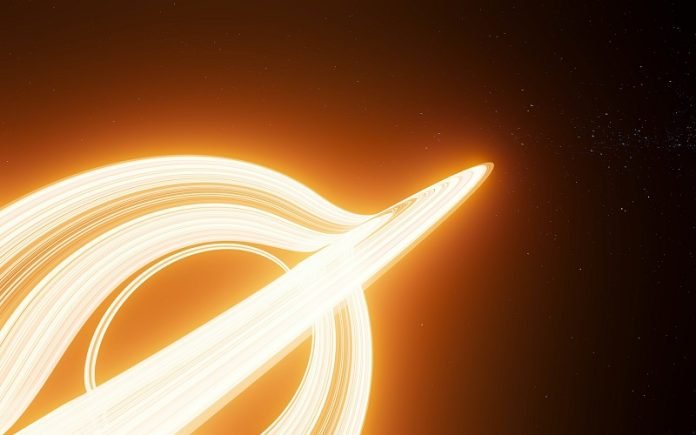
Scientists have made a remarkable breakthrough in understanding black hole jets, powerful streams of particles emitted by black holes.
Recently published findings in the journal Nature Astronomy have revealed unexpected variations in X-ray emissions from these jets over relatively short periods of time.
This discovery contradicts one of the leading theories and opens up new possibilities for understanding how particles are accelerated in these jets, which could have implications for our understanding of the universe as a whole.
Astronomers from the University of Maryland, Baltimore County analyzed data from the Chandra X-ray Observatory, which provides high-resolution images of celestial objects.
They examined 155 distinct regions within 53 black hole jets and found that the X-ray emissions from a significant number of these jets changed over just a few years.
This frequent variability challenges the notion that X-ray emissions from black hole jets remain stable over millions of years, as previously believed.
The study highlights two contrasting models that attempt to explain how X-rays are produced in black hole jets.
One model suggests that low-energy electrons are responsible, while the other proposes high-energy electrons.
The model based on high-energy electrons is incompatible with the observed variability. This inconsistency has led scientists to reconsider their understanding of particle acceleration and X-ray generation in black hole jets.
Previous theories assumed that particle acceleration occurred solely at the center of the galaxy, where the black hole resides.
However, the new findings indicate rapid changes in X-ray emissions along the entire length of the jets. This suggests that particle acceleration occurs at vast distances from the black hole’s origin, challenging the traditional understanding of how black hole jets operate.
Interestingly, the study also revealed that jets closer to Earth exhibited more variability than those farther away.
This observation suggests that older jets, which are more distant, show less variability.
The researchers speculate that this could be due to the universe being smaller in the past, with higher levels of ambient radiation, leading to greater stability in X-ray emissions from the jets.
The research team faced significant challenges in analyzing the data, as some observations contained only a few X-ray photons.
To ensure the accuracy of their findings, the scientists collaborated with statisticians from the University of Toronto and the Imperial College of London. This collaboration helped distinguish genuine variability from random fluctuations, leading to the groundbreaking discovery.
The surprising results of this study have undermined one of the major theories regarding X-ray production in black hole jets.
The lead author of the study hopes that these findings will inspire theorists to reassess their models and develop new explanations that align with the observed data. This study marks a significant step forward in our understanding of black hole jets and calls for further exploration and investigation.
In conclusion, the recent discoveries about black hole jets and their X-ray emissions have challenged existing theories and opened up new avenues for research.
This exciting breakthrough provides an opportunity to rethink how particles are accelerated within these jets and potentially reshape our understanding of the universe.



